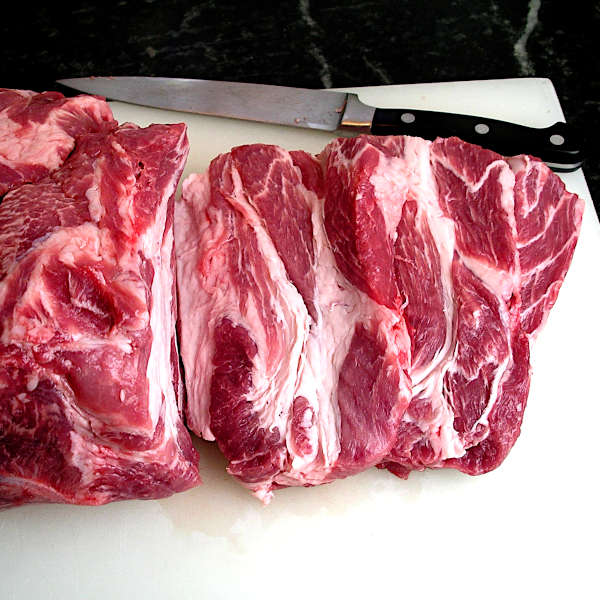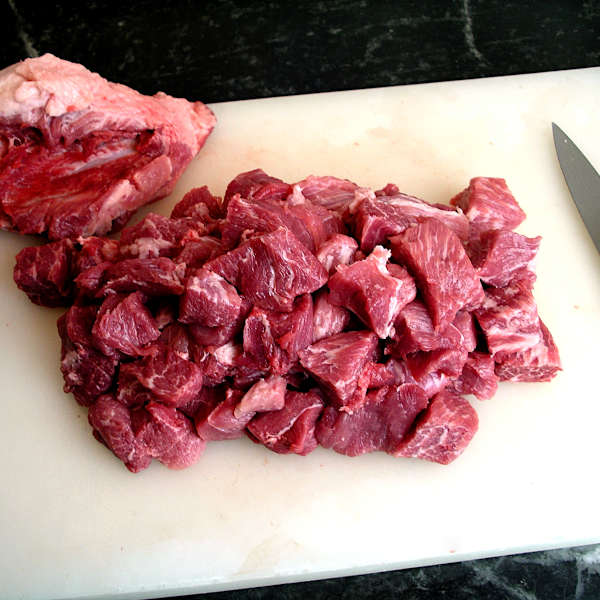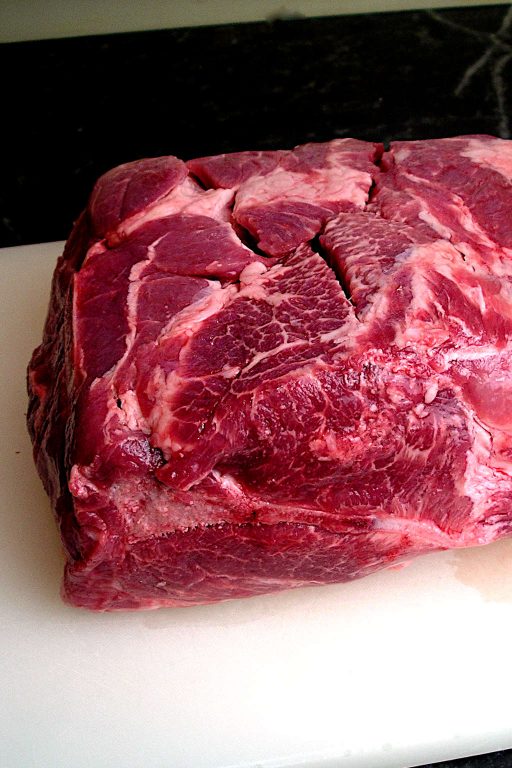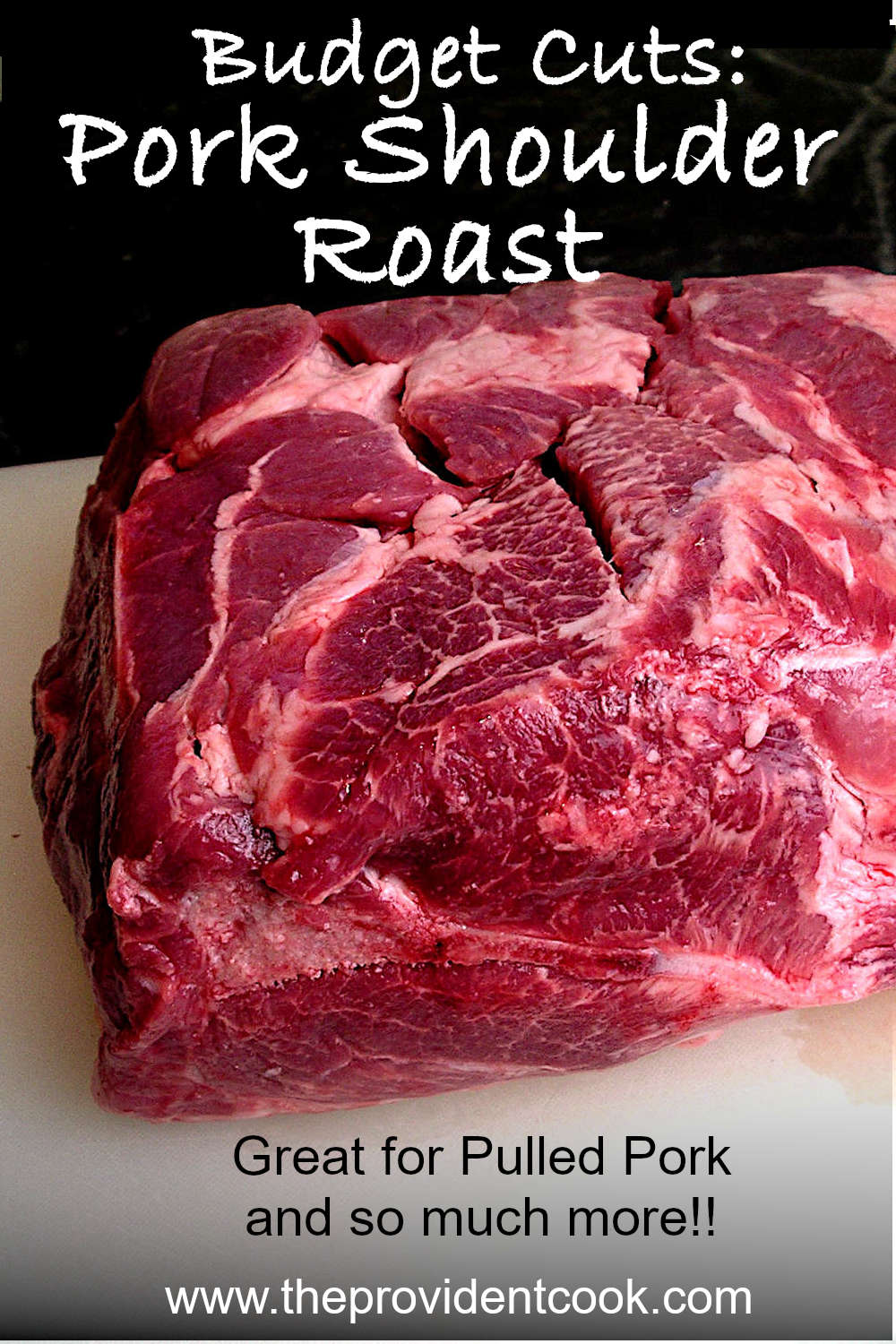Call it pork shoulder, pork shoulder arm roast, pork butt, Boston butt, or picnic shoulder. This is is one of my favorite budget cuts of meat. It’s the upper front limb of the hog, and it features well-marbled meat with a lot of collagen.
This adds up to meltingly tender pork for stews, blanquettes, and similar dishes. All of them are cooked low and slow to bring the pork to perfect tenderness.
It’s great as pulled pork, and certain parts of the cut are perfect for sausage-making. Pork shoulder is also popular in Spanish, Mexican, Argentinian, and Korean cuisines.
Best of all, it’s usually pretty inexpensive. Here in the Midwest, I frequently scoop them up on sale for 99¢ a pound. Even at regular price, I rarely see it much above $1.50 per pound, (Though there may be some regional differences in the U.S.)
Alternatives to Pork Shoulder
One thing that may put you off a bit is that it’s a HUGE cut of meat – typically 6 to 8 pounds! If you have a small household that may seem like far too much.
I’ll show you below how I use a full-size pork shoulder efficiently, but here are a few alternatives for this cut:
- Your butcher may offer smaller portions of this large cut, such as a shank half or shoulder half.
- Another alternative is pork country-style ribs, which are typically cut from the pork shoulder.
- Your butcher may also be willing to slice a full-size pork shoulder into half-inch or thicker slices. (Some don’t offer this service, especially if they keep kosher.) This way, you can use some of the slices as pork steaks, and others for different purposes.
Breaking it Down
The pork shoulders that are available in my area all include the shoulder bone, So, depending on what I plan to make, I begin by slicing off about 3 pounds from the non-bone end. (The end that is closest to the animal’s knee.)

You can see all the fat in this end of the pork shoulder above. It works out to around 20%, which is the meat-to-fat ratio you want for sausage. I’ll cut this down further into about 1x1x4-inch strips, ready to go into the meat grinder.
Taking it Further
If I’m making something like pulled pork or pernil (a Puerto Rican dish), I stop at this point. The large cut that remains is typically around 4 to 5 pounds, which is just what’s needed.
However, a number of my recipes call for cubed pork, so I often cut the remainder down and freeze it in one-pound portions. I use a shorter, thin knife that’s often called a utility knife (see it in the photo above). I find that size to be easier to maneuver.

I start by cutting along the major seams in the remaining meat, removing excess fat and cubing it as I go. The smaller, thinner knife lets me get very close to the bone, as you can see above in the upper left.
To simply remove and reserve some slices for sausage, as in the first photo, takes me just a few minutes. However, fully breaking the pork shoulder down into recipe-ready cubes takes longer – about an hour total.
It’s a project for a weekend when I don’t have a lot of other things to do. And I’m always glad when it’s all done! But in the end I’m rewarded with recipe-ready pork that I can use in multiple ways, just waiting for me in my freezer.


